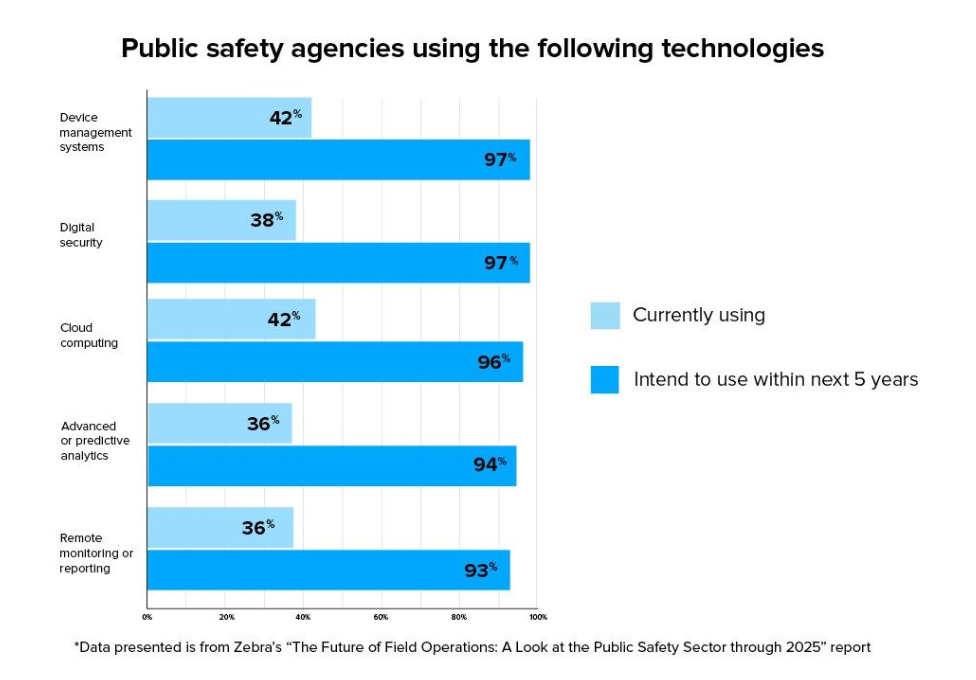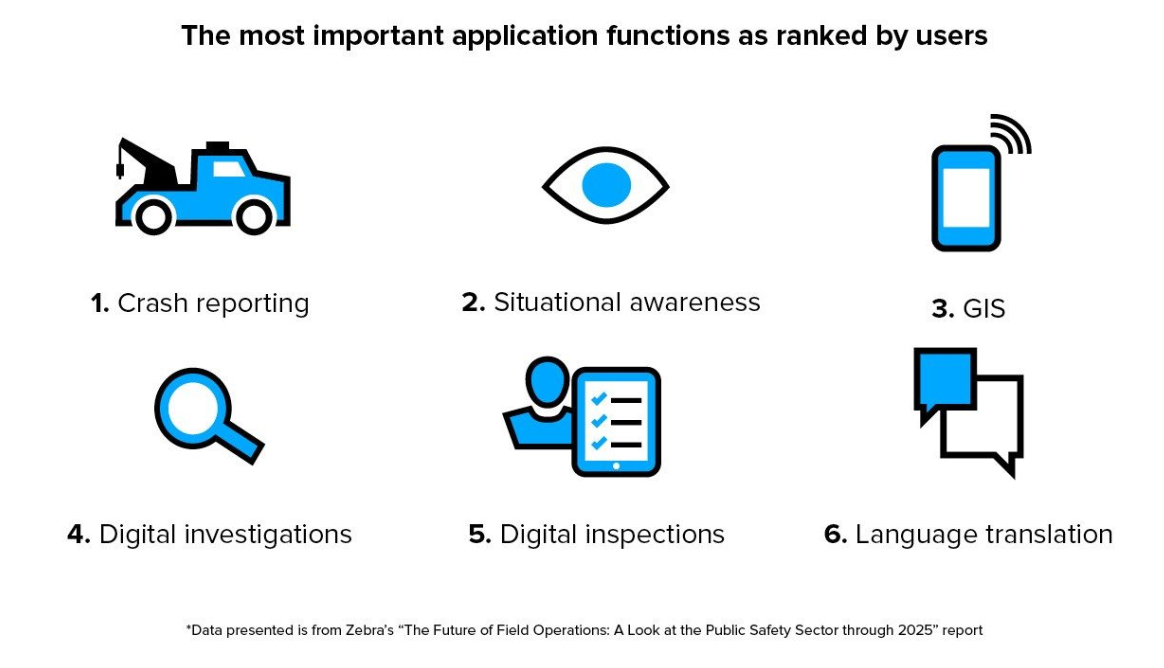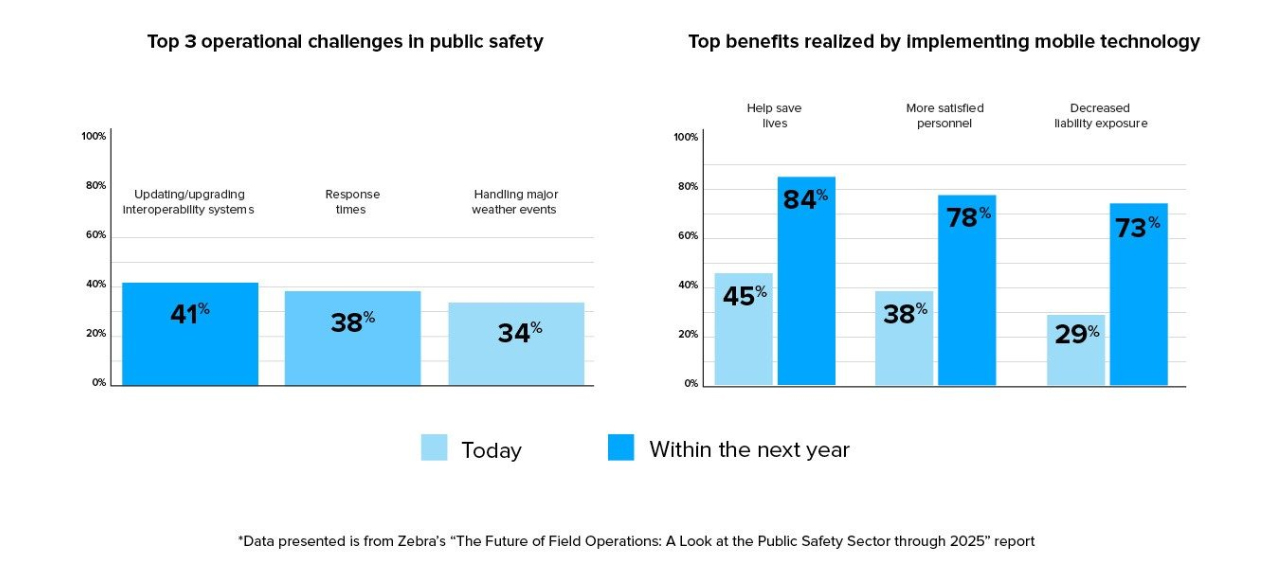Partner Blog
by Bob Ashenbrenner
FIRST RESPONDERS’ FRONT-LINE HEROICS DURING THE COVID-19 OUTBREAK AND OTHER EMERGENCIES ARE MADE POSSIBLE, IN PART, BY THE SMART TECHNOLOGY STRATEGIES AND PROCUREMENT ACTIONS BEHIND THE SCENES.
COVID-19 has brought new challenges to the world: full populations under stay-at-home orders, hospitals overwhelmed and supply chains strained. The one constant? Public safety professionals – police officers, firefighters and emergency medical technicians (EMT) – are expected to remain on the front lines, taking extreme personal risks to themselves and their families to serve their communities in these times of great need. Except, many first responders are sidelined right now due to suspected or confirmed illnesses, leaving agencies challenged to carry a larger workload with fewer people and without the necessary personal protective equipment (PPE). And while nothing of this magnitude has happened for over a hundred years, we know that our public safety agencies have been preparing for and training for a situation like the one we are living through.
Preparing for the unexpected—and training for it—are essential traits of any organization that may be called upon in critical moments. Earlier in my career, I had the privilege of working with a director of top-level tech support at a major computer company. Before stepping into high-tech leadership, he had served 20 years in the U.S. Marine Corps, retiring as a Colonel. His military career spanned war zones, naval-to-shore gunnery training, and intelligence operations.
At the computer company, he strongly advocated for deeper technical training across the research and development (R&D) teams. His reasoning was powerful: the U.S. military relies on advanced and highly complex technology daily, yet they don’t “hire” experts in radar or other specialized systems. Instead, they take untrained young recruits and rigorously train them to master these technologies. His message was clear—when you prepare extensively, you can respond effectively in high-pressure situations.
That same principle applies in today’s digital landscape. Organizations adopting tools like mobile device management solutions must train their teams to use them to their fullest potential. With the right preparation, companies can safeguard data, respond quickly to threats, and stay agile in an ever-changing environment.
Zebra’s recently released study exploring “Critical Field Operations” confirms that this same approach is being embraced by public safety agencies, too.
READ THE FULL STUDY REPORT
Law enforcement officers, firefighters and emergency medical service (EMS) personnel are focused on learning and honing a specialized skill set that can be applied in the line of duty during both routine actions and inevitable emergency situations.
Whether preparing for a routine fire drill or managing a large-scale pandemic response, technology plays a critical role in modern emergency preparedness. Tools such as mobile computers, tablets, wearables, and other connected devices—while only a fraction of the first responder toolkit—have become indispensable for ensuring safety and improving efficiency in both routine tasks and high-stakes situations. By enabling seamless communication and rapid decision-making, these technologies act as a force multiplier, especially when a reduced workforce must handle a significantly heavier workload. To maximize their effectiveness, organizations are increasingly relying on mobile device management solutions to secure, monitor, and optimize these devices, ensuring they remain reliable and ready in any crisis.
WHAT IT MEANS TO SENSE, ANALYZE AND ACT FROM A PUBLIC SAFETY PERSPECTIVE
As you can see from the chart below, public safety agencies report increased implementation of “Device Management Systems,” “Cloud Computing” and other core software-based solutions that serve as the foundation of today’s more dramatic front-line technological capabilities.

They are under immense pressure to meet citizens’ rising expectations in their communities, and mobile technologies facilitate faster, more informed actions – not unlike the way mobile technologies increase the speed and efficiency of front-line workers in the warehousing, manufacturing, retail, energy or utility sectors.
Plus, public safety agencies must prepare for every imaginable scenario, plan the best response, develop the tools and techniques and train on them, regardless of how remote the chance that the worst will happen. Because, someday, the worst will happen. So, between crises, when there are times of (relative) normality, the men and women that step up to serve as first responders often take a step back to assess their preparedness level. Together with support teams, such as administrators and IT, they will review their processes, procedures and equipment – especially their technology assets – using an approach that one might describe as thorough, yet commonplace.
While visiting a couple of police agencies in Virginia a few years ago, I was struck at how similar the meetings were to those with companies in other industries. Both IT and field workers – that is, active police officers – joined to learn more about their tablet computer and accessories solution options. Their interests were very similar to those you might hear when speaking with any field-oriented organization about tablet-based mobility solutions: device capabilities, ruggedness, available accessories and whether the vehicle docks would safely work in their vehicles. And while such IT-specific considerations are common for organizations with a large field-based workforce, these public safety IT teams also talked about some of their unique internal issues, like whether they will have their own email servers or have to use their city or county’s general server. (Both agencies were able to wrestle away control and were allowed to use their own server, as their up-time and security needs weren’t served by the administrative email server team.)
During a break, we (the solution engineering team) had time to casually talk with the agency attendees about everything from how to best grill meat to real-life stories of action in the line of duty. After arguing with me a bit about grilling temperatures, these men and women recounted numerous stories of difficult calls they were able to handle effectively and safely, which left me in admiration of the day-to-day encounters they have. It became clear just how focused they are every day on training for those extreme situations that they will encounter sooner or later.
It makes sense. When one of these emergencies happens, there is no time to consult a manual on how to address the situation. They have to know how to bring all of the tools at their disposal to bear at a moment’s notice, while under immense stress, without second-guessing a single move – technology tools included. Consider the current situation: first responders are having to take extra precautions on every call to protect both themselves, their families and those they’re helping. For example, they have to disinfect their mobile devices to very strict standards at the same frequency they’re washing their hands. Knowing which mobile computer features can aid with social distancing is now critical, even if it was unheard of a few short months ago. Yet, their training on how to obtain real-time info on current government orders, connect with other support agencies and utilize longer-range barcode scanners to look at a driver’s license held by a citizen, not by the officer, all come into play. Fortunately, the devices that are used daily for routine police, fire or EMS work are the same ones that will be used during an emergency.
So, those officers in the room during my meetings with Virginia police agencies weren’t just there to make sure they liked how the devices looked. They needed to make sure the devices would be functional in the field both during routine operations such as dispatch reporting or eCitation and – even more importantly – in those emergency scenarios where long shifts or hazard exposures might be common. They were intent on selecting devices with long battery run-times and hot-swap capabilities as well as the ability to use touch screens while wearing gloves or other personal protective equipment (PPE). Public safety professionals who responded to Zebra’s “Future of Field Operations” study also confirmed that situational awareness was one of the top two reasons why they would use tools such as tablets and other mobile computers on the job.

If you notice, though, there is a trend at play in the “most important application functions” rankings in the image above. They all align with this eagerness by first responders to be able to better “sense, analyze and act” in any given situation – to be well-equipped through a combination of technology, training and skill to effectively respond every time.
That is why I found it ironic that response times and major weather events still pose two of the top three operational challenges for public safety agencies. With the right technology tools in play, the right people can be deployed to the right place, at the right time, with the right insights to help mitigate or resolve any incident. Then, I realized that the top operational challenge right now is directly impacting technology readiness – and therefore, first responder – readiness.

HOW RUGGED MOBILE DEVICES CAN IMPROVE TECHNOLOGY READINESS INSTANTANEOUSLY
Nearly half (41 percent) of public safety agencies admitted in Zebra’s study that it is difficult to update or upgrade their interoperability systems. This isn’t too surprising, to be honest. There’s a lot that goes into deploying just one mobile device for one fire department battalion chief or law enforcement patrol unit. It’s not as simple as powering on a device and downloading a few apps.
Given the sensitivity of public safety operations and the type of data shared via handheld mobile computers, tablets and wearables, basic IT functions include more complex actions such as device provisioning, security credential installations, remote device management and secure server connections. That’s just the start…the foundation. Layered on top of that will be the essential applications, such as eCitation, digital chalk and crew rosters/accountability, as well as unique system accesses, such as electronic health records (EHR) or electronic patient care reports (ePCR), the Criminal Justice Information System (CJIS) and the FBI’s National Crime Information Center (NCIC) database, which requires a very secure mobile device for in-field access.
Those public safety agencies that choose to deploy enterprise-grade rugged devices in the field find it easier to manage the implementations, updates, accesses and lockdowns – even when officers, firefighters or EMS techs are in the field.
Unlike with consumer-grade devices, security patches, software updates and even new features and functions can be pushed to enterprise-grade rugged tablets and mobile computers with zero-day support using tools such as OEMConfig (for Android devices) or manufacturers’ unique mobile device management tools. IT can do its part to keep both public safety professionals and the private citizens they serve as safe as possible with minimal effort. The managed services offered by rugged mobile device manufacturers can further relieve the burden on IT, enabling them to keep tabs on each device’s health at all times – to “sense” performance quality, battery life and more – so that they can pre-emptively analyze and act to improve technology readiness and, therefore, first responder readiness.
Remember, provisioning and licensing all of these devices and software applications won’t matter if the devices fail due to mismanagement or a lack of physical ruggedness/resilience when first responders really need them. These devices have to work at all times. Period.
There has been a lot written about how much engineering goes into making a device truly rugged. While engineers aren’t thinking “pandemic” during the design phase, they are thinking about how to maximize uptime and utility. The actual technology required to achieve the challenging task of designing a rugged form factor with resilient internal computing components yields a lot more than an IP rating. These characteristics don’t just happen – don’t be fooled by a claim or label.
###

